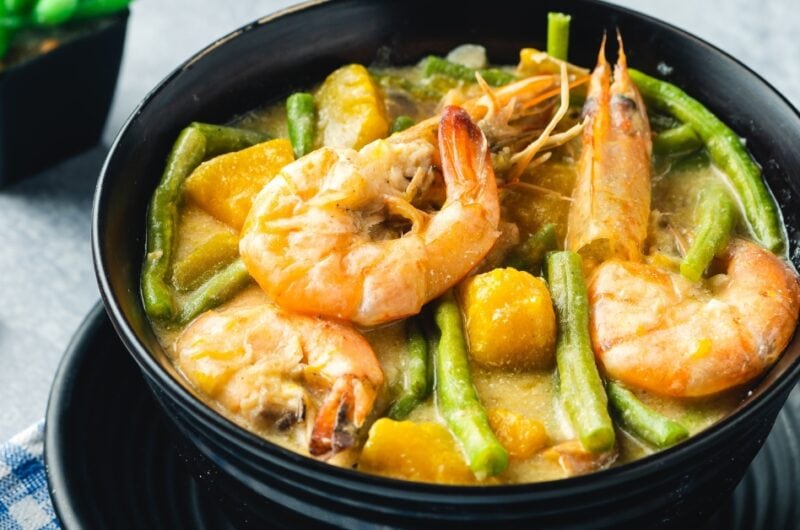Try Flavorful Filipino Food Recipes for Every Occasion.
Enjoy Standard Filipino Flavors With Easy-To-Follow Recipes
Exploring traditional Filipino cuisine uses a distinct chance to engage with an abundant tapestry of flavors and cultural stories. As we check out these cooking practices, one might question exactly how to ideal bring the heat of Filipino friendliness to their very own dining table.

Review of Filipino Food
Checking out the lively tapestry of Filipino food exposes a rich cultural heritage influenced by numerous historical and geographical variables. As a result, Filipino cuisine is a special mix of Malay, Spanish, Chinese, and American elements.
Rice works as the foundation of Filipino dishes, frequently come with by an array of vegetables, meats, and seafood. Using strong tastes is a hallmark of the food, with ingredients such as garlic, onions, ginger, and soy sauce playing essential functions. The focus on communal eating shows the Filipino society of hospitality and household ties.
Street food additionally plays a substantial duty in the cooking scene, showcasing neighborhood components and creative food preparation methods. As the Philippines remains to welcome globalization, the combination of standard and modern influences can be seen in modern Filipino dishes, even more enhancing its culinary identity. Filipino food recipes. On the whole, Filipino food is a testament to the nation's history, society, and vivid spirit
Must-Try Traditional Dishes
Filipino cuisine is ideal experienced with its traditional dishes, each supplying an one-of-a-kind understanding right into the country's varied cooking heritage. Among the must-try recipes is Adobo, a savory stew typically made with poultry or pork, marinaded in vinegar, soy sauce, and garlic before being slow-cooked to perfection. Its abundant and tasty flavor profile stands for the heart of Filipino convenience food.
Another famous recipe is Sinigang, a sour soup typically prepared with tamarind, tomatoes, and different vegetables. This recipe can include pork, shrimp, or fish, and is valued for its refreshing taste and warming up top qualities.
Lechon, a whole baked pig, is a focal point at Filipino parties, understood for its crunchy skin and tender meat. It symbolizes the joyful spirit of Filipino celebrations.
For those desire something pleasant, Halo-Halo is a delightful treat incorporating smashed ice, sweetened fruits, jellies, and topped with leche flan and purple yam.
Each of these conventional meals encapsulates the significance of Filipino society, welcoming any person to relish the vivid tastes and abundant background that specify the archipelago's cooking landscape.
Step-by-Step Recipes
Food preparation genuine Filipino dishes in your home can be an improving experience that brings the lively tastes of the Philippines into your kitchen. With a plethora of typical recipes to select from, using step-by-step recipes permits both beginner and skilled cooks to understand the techniques and flavors integral to Filipino food.
Begin by picking a recipe that intrigues you, such as adobo, sinigang, or lumpia. Each recipe frequently consists of a detailed ingredient checklist followed by clear guidelines, assisting you with the food preparation process. Start with prep work, which may involve marinating healthy proteins, chopping veggies, or determining flavors. This fundamental step ensures a smooth food preparation experience.
As you progress, pay very close attention to cooking methods one-of-a-kind to Filipino cuisine, such as sautéing (ginisa) or stewing (nilaga) These approaches can considerably improve the deepness of taste in your recipes. Timing is crucial; follow the suggested food preparation times to attain the best texture and taste.
Necessary Components and Tips
Regularly, the secret to understanding Filipino cuisine lies in understanding and using vital active ingredients that specify its unique tastes. Central to several meals are staples like soy sauce, vinegar, garlic, and ginger, which add to the special equilibrium of full-flavored, sour, and wonderful notes. Soy sauce offers as a base for marinates and sauces, while vinegar, especially walking cane vinegar or coconut vinegar, presents a zesty brightness that is essential in meals like adobo.
Rice is a vital part of Filipino meals, usually served together with main dishes to take in savory sauces. For a touch of credibility, choose for jasmine or long-grain rice. In addition, making use of fresh produce such as tomatoes, eco-friendly beans, and eggplants improves the dish's vibrancy and nutritional worth.
Do not neglect the significance of herbs and flavors, such as bay leaves, lemongrass, and chili this website peppers, which elevate the flavor account. When cooking, bear in mind that patience is key-- enabling components to blend with each other results in richer tastes. Embrace the method of sampling as you go; this will enable you to readjust seasonings and attain the excellent equilibrium that identifies Filipino cuisine.
Offering and Taking Pleasure In Filipino Meals
Understanding the subtleties of Filipino cuisine expands past prep work and active ingredients; it incorporates the method dishes are served and enjoyed. The Filipino eating experience is defined by communal sharing, advertising a sense of togetherness and event. Usually, dishes exist in large portions, permitting diners to participate in a range of tastes.
Rice, a staple in Filipino dishes, is commonly functioned as the foundation whereupon the other meals remainder. Coming with viands, such as adobo, sinigang, click this or lechon, are put in the facility of the table, welcoming visitors to serve themselves. original site Filipino food recipes. This technique not only fosters a relaxed environment however likewise urges conversations and connections amongst diners

Conclusion
To conclude, conventional Filipino cuisine provides an abundant tapestry of tastes and cultural importance, inviting exploration through its diverse dishes. The easy-to-follow dishes supplied help with the prep work of renowned meals, fostering a much deeper gratitude for the ingredients and strategies included. Stressing common eating, these cooking methods strengthen household ties and advertise the warmth of Filipino friendliness. Engaging with this vivid food not only enhances the dining experience yet likewise maintains and commemorates the heritage of the Filipino people.